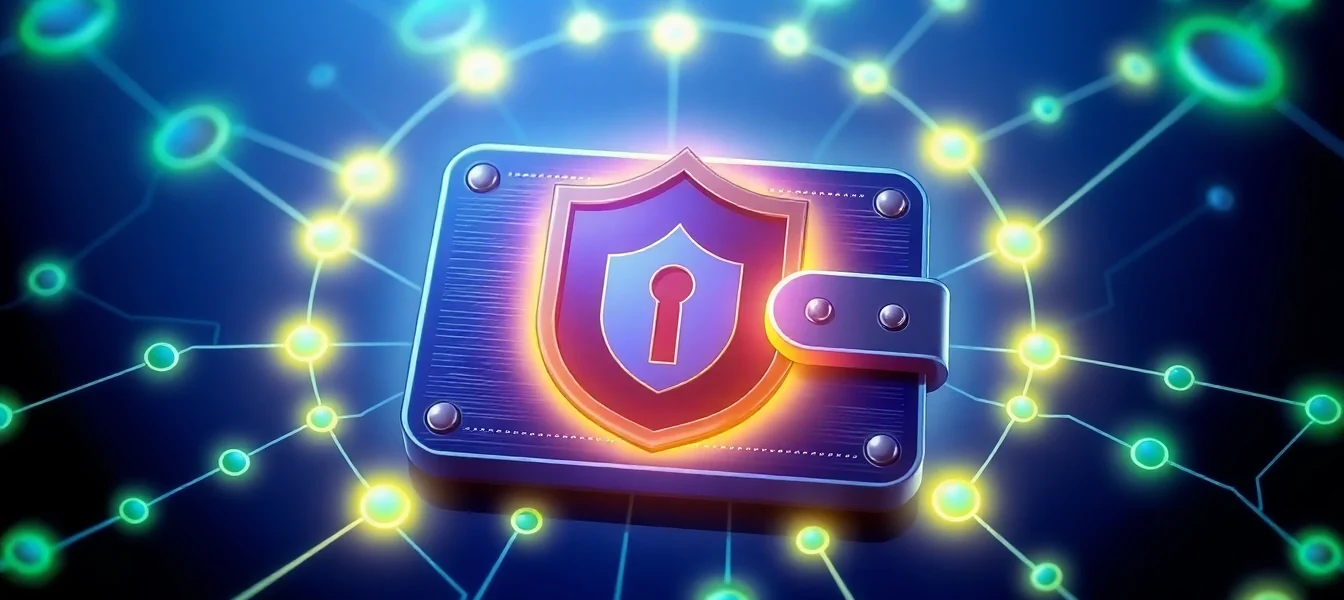Introduction to Crypto Wallets and Their Role in Digital Asset Security
In the rapidly evolving world of cryptocurrencies, securing digital assets is paramount for both individual investors and institutional players. Central to this security framework are crypto wallet—the fundamental tools that allow users to store, manage, and transact their digital currencies safely. Unlike traditional banking systems, cryptocurrencies operate on decentralized networks, making wallet security a critical concern to prevent theft, fraud, and access breaches. Properly understanding how crypto wallets function and choosing the right type for your needs are essential steps toward safeguarding your holdings in a landscape riddled with evolving threats and scams.
Crypto wallets not only store your private keys—the digital keys that grant ownership of your cryptocurrencies—but also facilitate sending and receiving assets. Security pitfalls, such as phishing attacks, malware, and hacking vulnerabilities, highlight why the right wallet choice and best practices are vital for protecting your investments. With the surge of DeFi applications, NFTs, and blockchain-based assets, having a comprehensive grasp of crypto wallet basics is more relevant than ever.
Key Features to Consider When Selecting a Crypto Wallet
Security protocols and private key management
The cornerstone of any effective crypto wallet is its security architecture. Hardware wallets, for instance, store private keys offline in a physical device, significantly reducing exposure to online threats. Conversely, software wallets store private keys on connected devices, necessitating robust encryption and additional security measures such as biometric authentication and PIN codes. When evaluating wallets, ensure they employ multi-layered security protocols, including end-to-end encryption, secure enclave technology, and regular security audits. Proper private key management—such as never sharing keys or seed phrases—is essential, and users should always keep backups in secure offline locations.
User interface and ease of use
A wallet’s user experience greatly influences its security and usability. Intuitive interfaces with clear navigation and straightforward backup options make it easier for new users to adopt secure practices. Wallets like MetaMask and Exodus offer user-friendly dashboards that allow for seamless asset management, exchanges, and integration with dApps. For more advanced users, customizable features and detailed transaction histories are invaluable. Striking a balance between security and usability ensures that users aren’t tempted to bypass protections due to overly complex procedures.
Supported cryptocurrencies and scalability options
The diversity of assets supported by a wallet is crucial for long-term growth and flexibility. Leading wallets typically support not only Bitcoin and Ethereum but also a wide array of altcoins, tokens, and NFTs. As the blockchain ecosystem expands, scalability features like multi-chain compatibility, hardware integration, and support for Layer 2 solutions become increasingly important. Choosing a wallet that can accommodate your current holdings and future additions minimizes the need for migrating assets later, reducing potential exposure to risks during transfer processes.
Top Crypto Wallets in 2025: Features, Strengths, and Weaknesses
Review of leading wallets like MetaMask, Exodus, Trust Wallet
The landscape of crypto wallets in 2025 features several standout options, each with unique strengths. MetaMask remains the preferred Web3 wallet for a blockchain-savvy audience, offering seamless access to dApps and DeFi protocols with robust security features. Exodus combines user-friendliness with multi-asset support, making it ideal for beginners and experienced traders alike. Trust Wallet boasts extensive multi-chain support and integrated staking features, positioning it as a versatile choice for mobile users. Each of these wallets balances security, ease of use, and scalability differently, making it essential to match features to personal needs.
Pros and cons of hardware vs software wallets
Hardware wallets, such as Ledger and Trezor, are considered the gold standard for security, storing private keys offline and providing cold storage. They excel at safeguarding large holdings but come with higher upfront costs and slight inconvenience during transactions. Software wallets, like MetaMask and Trust Wallet, are more convenient and accessible, especially for active traders, but they are more vulnerable to online threats if not properly protected. The best approach depends on your asset size, trading frequency, and security comfort level—often a combination of both offers optimal coverage.
How to determine which wallet fits your investment needs
Assess your goals: Are you holding long-term, high-value assets or actively trading? For large, “HODL” assets, hardware wallets provide added security. For frequent transactions and DeFi participation, software wallets with multi-chain support and user-friendly features are ideal. Consider your technical proficiency—if you’re new to managing private keys securely, beginner-friendly wallets with integrated backup options are recommended. Regularly review wallet updates and community feedback to stay aligned with evolving security standards and usability improvements.
Best Practices for Securing Your Crypto Wallets
Implementing two-factor authentication and backups
Multi-factor authentication (MFA), including authenticator apps and biometric verification, adds an extra layer of protection for wallets that support login-based security. Always create secure, offline backups of seed phrases and private keys in multiple, geographically separated safe locations. Encryption of backup copies prevents unauthorized access in case of theft. Regularly test restoration processes to ensure access in case of device failure or loss, reducing the risk of permanent asset loss.
Recognizing and avoiding common scams and vulnerabilities
Crypto scams, including phishing, assets impersonation, and fake wallet downloads, remain prevalent. Keep software updated, avoid suspicious links, and verify sources before downloading wallet apps or seed phrases. Be cautious when sharing personal information and never give your private keys or seed phrases to anyone. Phishing sites mimicking legitimate wallet providers can deceive even experienced users; always access wallets through official channels.
Regularly updating wallet software and security measures
Developers continually patch security vulnerabilities, making regular updates critical. Enable automatic updates where possible, and stay informed through official channels about emerging threats. Consider integrating additional security measures like hardware security modules (HSM) and hardware-based encryption tools. Conduct periodic security audits of your wallet setup—this includes reviewing connected apps, permissions, and transaction histories for suspicious activity.
Mindset and Strategies for Managing Your Digital Assets Safely
Understanding risk management and diversification
No security measure is infallible. Diversification, not only across cryptocurrencies but also across different wallet types and storage methods, minimizes risk exposure. Allocate assets based on risk appetite—keeping a majority in cold storage and a smaller, easily accessible portion in hot wallets for active trading. Regularly review your portfolio and security setups to adapt to market changes and personal risk tolerance.
Staying informed with latest security news and trends
The crypto sector is dynamic, with threats evolving rapidly. Follow trusted news sources, community forums, and official updates from wallet providers. Subscribing to security bulletins and participating in online webinars or workshops enhances awareness and preparedness. Knowledge of recent scams and security breaches helps in proactively safeguarding assets.
Long-term vs short-term wallet management strategies
Long-term strategies often favor cold storage solutions, emphasizing offline keys and minimal exposure to online threats. Short-term strategies favor hot wallets, which allow for quick trading and transactions. A balanced approach tailored to individual goals—such as using hardware wallets for savings and software wallets for trading—ensures both security and liquidity.




